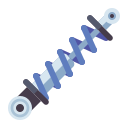Suspension & Steering
For premium quality suspension and steering car parts at low costs (up to 40% below MSRP), browse our huge collection below. Shop for anti-roll bars, links and bushes, control arms, ball joints and assemblies, shock absorbers and springs, wheel bearings, hubs and seals and much more.
Free shipping on all orders to UK Mainland addresses.
Categories
Refine
Stock Availability
- ({{ inStockCount }})
Price
£
to
{{ field.name }}
- ({{ value.count }})
Categories
- ({{ category.count }})
Brand
- ({{ brand.count }})
Loading...
In Stock
Out of Stock
{{ productListing.name }} - {{productListing.products[0]?.mpn}}
from
{{formatCurrency(productListing.displayCheapestStandardPrice)}} {{ formatCurrency(productListing.displayCheapestPrice) }}
{{ formatCurrency(productListing.displayCheapestPrice) }}
No products found.










